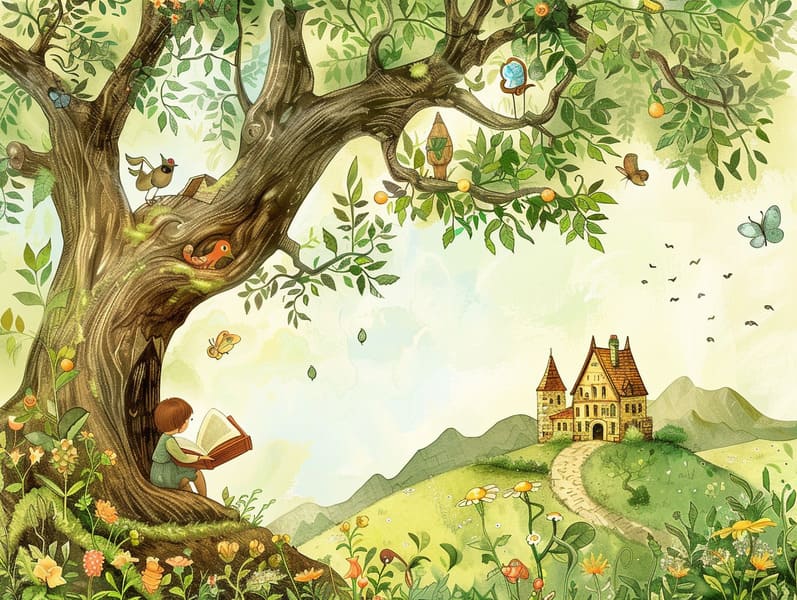The Creation of Classic Fairy Tales with the Perpetual Appeal.
The Creation of Classic Fairy Tales with the Perpetual Appeal.
Blog Article

Traditional fairy tales have old origins. These stories have been recounted from one generation to the next centuries before they were ever documented. They developed from a variety of societies, including Middle Eastern traditions. They were initially told among adults, often carrying themes and messages concerning the societal norms and beliefs of the time.
The renowned Brothers Grimm, Jacob and Wilhelm Grimm, were among the first to gather and publish many of these beloved fairy tales. Their anthology, "Grimm's Children's Stories," included tales like "Ashenputtel," "Hansel and Gretel," and "The True Story of Snow White," which have since become cornerstones in the world of children's fairy tales. Similarly, Hans Christian Andersen's enchanting fairy tales, such as "The Mermaid's Tale," and "The Little Duckling," have gained the love worldwide, solidifying their place in the pantheon of classic fairy tales.
Though they are old, these stories remain as pertinent as ever, especially as children's bedtime stories. These magical stories are now available in many formats, including richly illustrated books, fantastical animations, and online storybooks.
Their ongoing significance can be linked to several charming aspects:
Key Lessons: Classic fairy tales often impart important moral lessons. Narratives like "The Tale of the Boy Who Cried Wolf" teach the virtue of honesty, while "The Story of the Tortoise and the Hare" demonstrate the benefits of persistence and unpretentiousness. These narratives offer children clear distinctions between correct and incorrect, shaping their moral compass in a soft yet significant way.
Sympathy and Perception: Ancient fairy tales frequently showcase characters facing trials and tribulations, stimulating audiences to relate with their struggles and rally behind their triumphs. For instance, "The Tale of Beauty and the Beast" demonstrates the merit of seeing beyond looks to know the inner being of a being, promoting tenderness and knowledge.
Cultural Comprehension: Many traditional fairy tales are deeply embedded in the cultural contexts from which they came. Reading these tales can provide fascinating glimpses into different ways of life, promoting a sense of cultural understanding and acknowledgment.
Inventiveness and Fantasy: The magical elements in old fairy tales—spells and potions—unleash children’s imaginative ideas. These fairy tales transport readers to fantasy realms, engendering inventive thinking and a sense of delight that stays a lifetime.
Classic fairy tales are not only charming but also illuminating. They serve as entrancing tools in advancing various mind and heart abilities in children. When old fairy tales are read aloud, they enhance verbal development by offering new word meanings and intricate sentence structures. This practice also enhances auditory perception and concentration, as children stay focused, anxious to see what happens next.
Furthermore, deliberating the themes and characters of traditional fairy tales can strengthen thought processes and cognitive skills. The young are educated to see patterns, guess what will happen, and figure out cause and effect. These analyses also further the young communicate their thoughts and feelings, here contributing to their emotional intelligence.
In today’s technological era, the existence of online fairy tales has made these tales more reachable than ever. Internet sites and digital apps present comprehensive collections of old fairy tales that can be explored or played anytime, anywhere. Fairy tales read aloud are particularly well-received, presenting an delightful method for children to immerse in these fascinating tales. Read-aloud books and read-to-me stories transport characters and settings to life, often accompanied by magical harmonies and melodies that intensify the story journey.
The lasting allure of traditional fairy tales lies in their ability to change to modern days while continuing with their underlying messages. Contemporary reinterpretations of these fairy tales often showcase more varied protagonists and modern settings, making them relevant to today’s audience. However, the underlying themes of bravery, humanity, and rightness remain unchanged, continuing to appeal to young readers of all ages.
Fairy tales also offer a sense of warmth and recognition. They introduce a methodical narrative with a recognizable beginning, middle, and end, often wrapping up with the wrap-up of conflicts and the triumph of virtue over wickedness. This regularity can be calming for little ones, bringing a sense of dependability in an inconstant world.
Classic fairy tales continue to allure and teach new generations, maintaining their captivation and value in modern society. As bedtime stories for kids, they afford a perfect blend of charm and enlightenment, developing moral values, empathy, and creativity. The availability of free fairy tales online and the widespread nature of fairy tales recited guarantee that these traditional narratives remain available to new generations.
By keeping and communicating these tales, we continue to honor the rich tapestry of tales and cultural heritage. Whether you are accessing a richly illustrated book, viewing a online library, or listening to an audio story, the attraction of classic fairy tales is always within reach. These tales emphasize of the immortal effect of tales and its ability to tie us across time and space.
Whether you are experiencing a vibrantly illustrated book, discovering a web collection, or listening through an sound book, the attraction of children's fairy tales is always within reach.
These fairy tales reveal of the steadfast power of storytelling and its ability to unite us across eras and regions, casting a charm that delights and instructs alike.